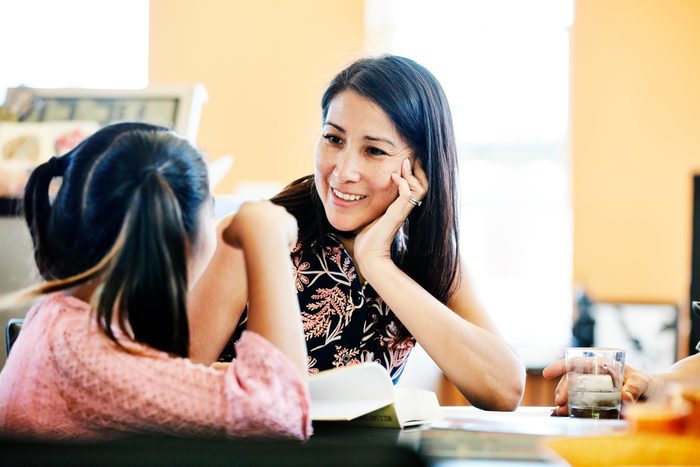
Moms always have the answer
As they say, necessity is the mother of invention. What that old adage leaves out is that it’s often mothers who come up with actual inventions to make their lives easier. That’s especially true when it comes to household and parenting products. For ages, women have devised resourceful solutions for everyday needs and concerns relating to their families and home lives (some of which also happen to make the most thoughtful baby gifts). Some of those solutions have become successful products that we couldn’t imagine our lives without. This Mother’s Day, let’s give credit where credit is due: to the forward-thinking women who changed our world for the better with these ingenious inventions.
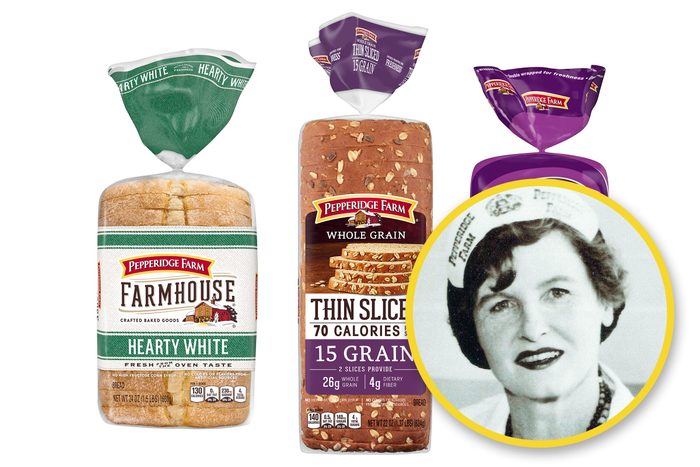
Pepperidge Farm
In the 1930s, Margaret Rudkin had a problem: Her youngest son’s severe allergies and asthma made him unable to eat most commercially processed foods. So she decided to take things into her own hands—literally—by making her own stone-ground whole wheat bread. Her first attempt came out like a rock, but she kept at it, and eventually, she created a delicious bread that actually improved her son’s health; in fact, the family’s doctor even started “prescribing” it to his patients. Eventually, she approached her local grocery store about carrying her homemade “Pepperidge Farm” bread (the name comes from the title of her home in Fairfield, Connecticut), and her kitchen experimentation evolved into an iconic culinary empire.
Fun fact: Reader’s Digest had a little something to do with Pepperidge Farm’s success. Back in 1939, after the company had produced its first million loaves, Reader’s Digest published a feature called “Bread Deluxe” on Rudkin and the company. After that, the demand for Pepperidge Farm bread skyrocketed, and the rest, as they say, is history. While we’re on the subject, find out why over 50,000 people a day are viewing this bread recipe.
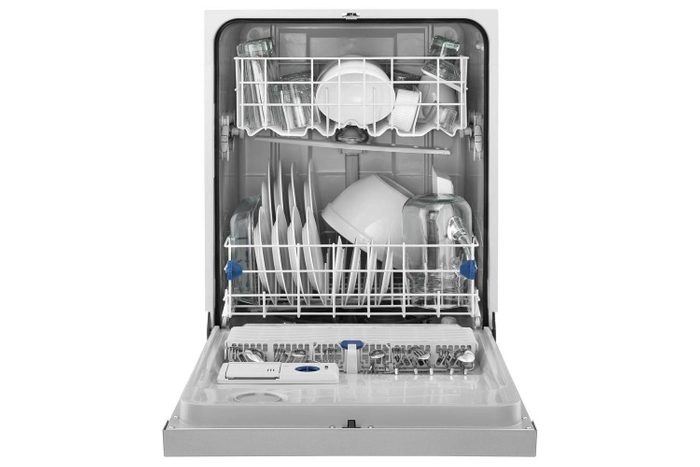
The dishwasher
Josephine Cochran and her husband, William, frequently entertained at home. After a while, she was dismayed to find that the dishware was getting chipped when washed by hand by the servants. After she took over that task, she wanted to find a more efficient way to do it—to make her life easier as well as the lives of all housewives and mothers. And that’s how the dishwasher was born.
Josephine filed a patent for her idea in 1885, then worked with a mechanic to build the prototype the following year. According to the U.S. Patent and Trademark Office, her design was the first to use water pressure (rather than scrubbers) to clean dishes and to have racks that held them in place. At first, her invention was mostly used by hotels and businesses, since their buildings had the right amount of water and heat capacities and the machines were too expensive for ordinary families. But in the 1960s, the dishwasher became a household staple. FYI, these mistakes will shorten the life of your dishwasher.
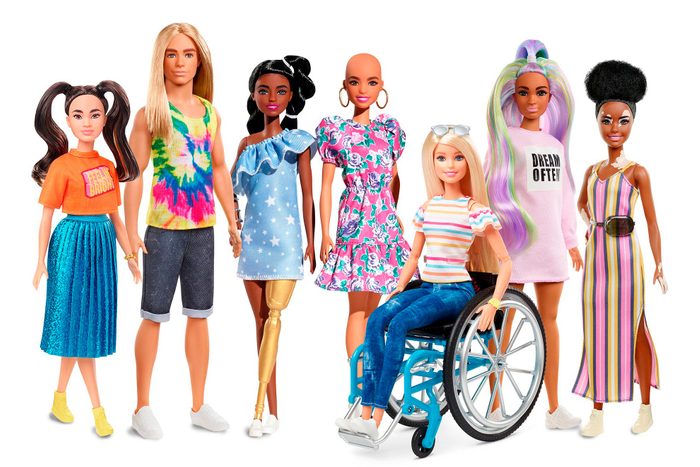
Barbie
Ruth Handler got an idea as she watched her daughter, Barbara, play with paper dolls for hours and her son play with toys that let him imagine that he was an astronaut or firefighter: Why not make a doll that showed girls that they could do anything? Barbie made her debut on March 5, 1959, at the New York Toy Fair. Later that year, she appeared on a TV commercial and 350,000 Barbies were sold. Since then, Barbie has been busy, taking on more than 200 careers (think computer engineer, social influencer, and paleontologist), as well as earning a car, a dream house, a boyfriend, and so much more. Her appearance has changed over the years, too. Here’s what Barbie looked like the decade you were born.
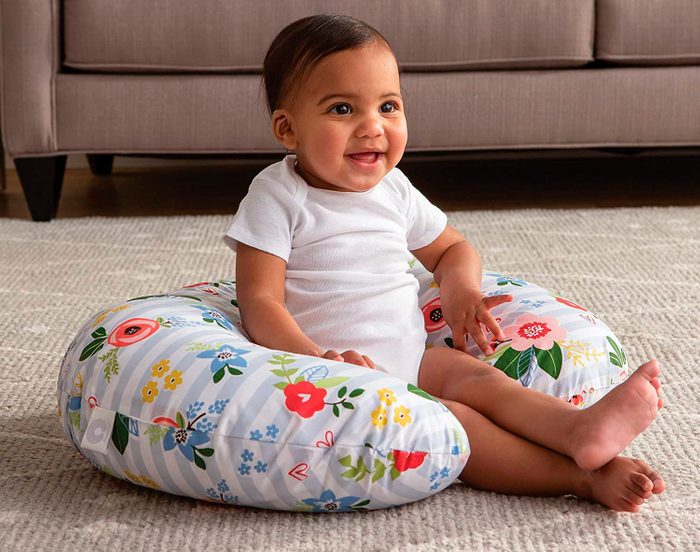
The Boppy
In 1989, Susan Henderson got a request from the staff at her daughter’s daycare. They wanted parents to provide pillows to support the babies when the staff couldn’t hold them. That’s when Henderson got the idea for the Boppy, a C-shaped pillow that would do just that. Soon after, it became a must-have baby essential on every mom-to-be’s registry and something useful for both nursing sessions and playtime.
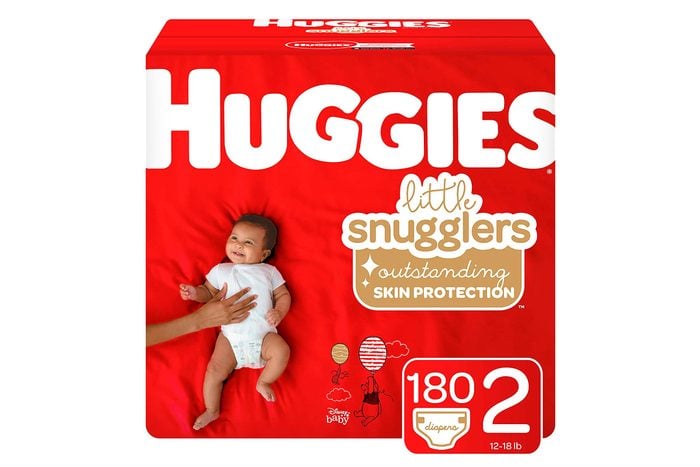
Waterproof diapers
Before there were disposable diapers, there was this absorbent nappy. It was created by young mom Marion Donovan the 1940s after she had to repeatedly change her daughter’s clothing and crib sheets whenever her cloth diaper got wet. According to the Smithsonian Institute, one day Donovan cut up a shower curtain and fashioned a nylon-based diaper cloth with snap fasteners instead of safety pins. Called “The Boater” because of its shape, Donovan manufactured and marketed the product by herself when company execs expressed their doubts about its sales. In 1951, two years after her design became a hit, she sold her patents to the Keko Corporation for $1 million, and today, we couldn’t imagine life without a leakproof diaper that doesn’t soak through at the first sign of wetness.
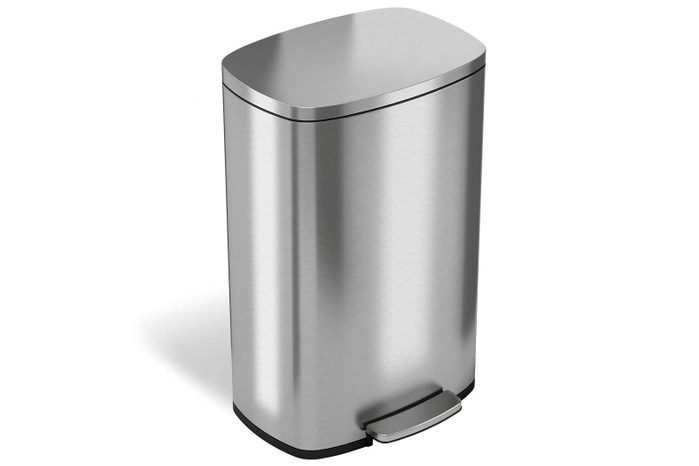
Foot-pedal trash can
As a mom of 12 and an industrial psychologist, Lillian Moller Gilbreth was quite a busy lady. In the 1920s, together with her husband, Frank, she examined productivity in the workforce; after his death in 1924, she focused her work on households, analyzing ways to save time and energy in the kitchen—something that would greatly benefit women. According to MachineDesign, Gilbreth’s research resulted in the invention of a number of common kitchen items, including a foot-pedal trash can and shelves inside refrigerator doors. Fun fact: Two of the couple’s children, Frank Bunker Gilbreth Jr. and Ernestine Gilbreth Carey, wrote a semi-autobiographical novel on what it was like growing up with their scientific-minded parents that was later adapted into the movie Cheaper by the Dozen.
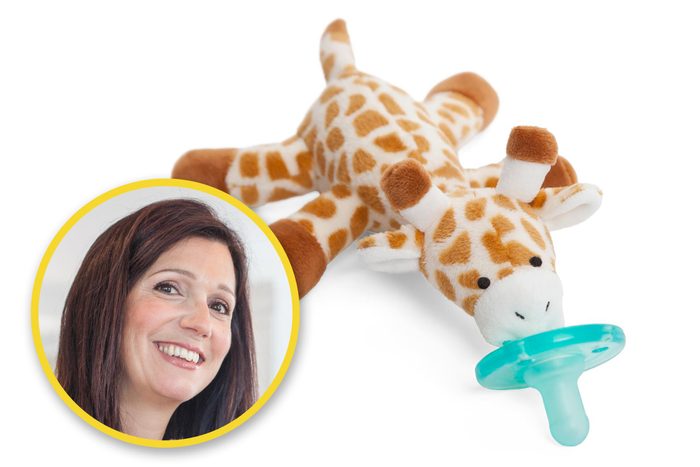
WubbaNub
Part plush animal, part pacifier—all genius. The WubbaNub is adorable and brilliantly simple, but it was born out of parental frustration. In 1999, while on vacation, Carla Schneider’s infant son could not be consoled when his pacifier dropped on the ground or went missing. She needed a way to keep the pacifier close by, so she used the hotel’s sewing kit to fasten his binky to his favorite stuffed toy—and created a new one altogether. Her aha moment for turning her personal problem-solver into a successful product occurred when moms started stopping her on stroller walks to ask her where she’d bought it.
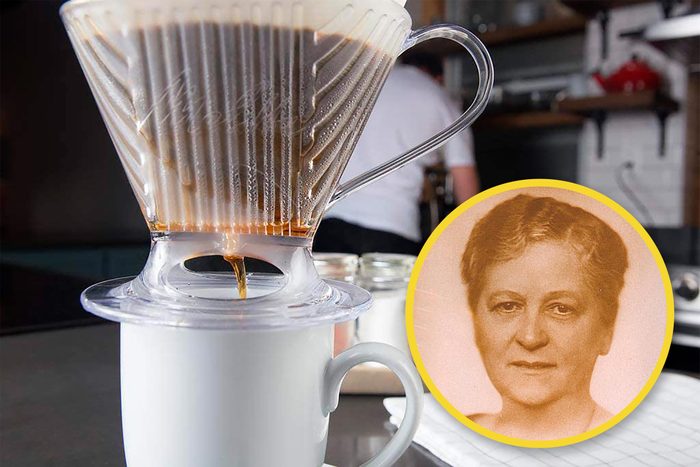
Paper coffee filters
Moms need coffee, and that was as true back at the turn of the 20th century as it is today. In 1908, Melitta Bentz created a better way to prepare it. She came up with the idea for paper filters, which prevented coffee grounds from ending up in the cup and ruining her perfectly good brew. The best part, however, may be how she first did it: Bentz punched holes through the base of a brass pot and placed a blotting sheet from her oldest son’s school book on it to create a two-part filtration system. Hey, whatever’s handy! Don’t miss these 5 tricks for making the perfect coffee.
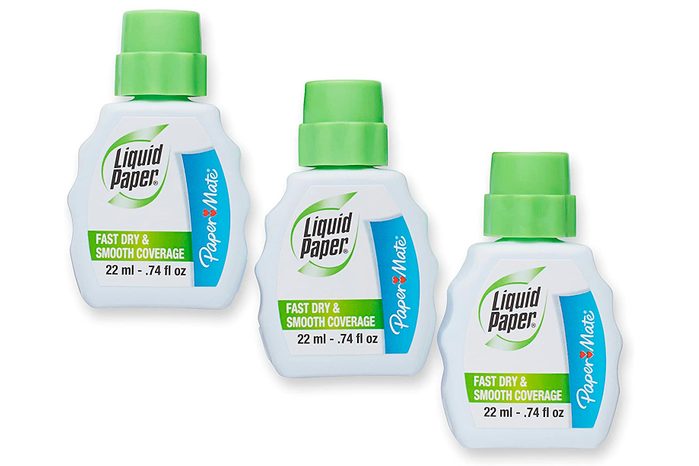
Liquid Paper
For those of us who still remember using typewriters, this white paint saved us from having to retype our work because of a single error. In the 1950s, single mom Bette Nesmith Graham, who worked as an executive secretary at a bank in Dallas, came up with a white, water-based tempera paint that could quickly and neatly cover up typed mistakes with a small brush. (She reportedly saw a storefront painter doing a similar task, which inspired the idea.) As other secretaries asked for some, she continued to perfect her corrective paint at home; she even had her son—Michael Nesmith, who later became famous in his own right as a member of the Monkees—and his friends pour it into bottles. By the ’60s, Liquid Paper boomed in sales, and Graham became a millionaire and a philanthropist for women’s charities.
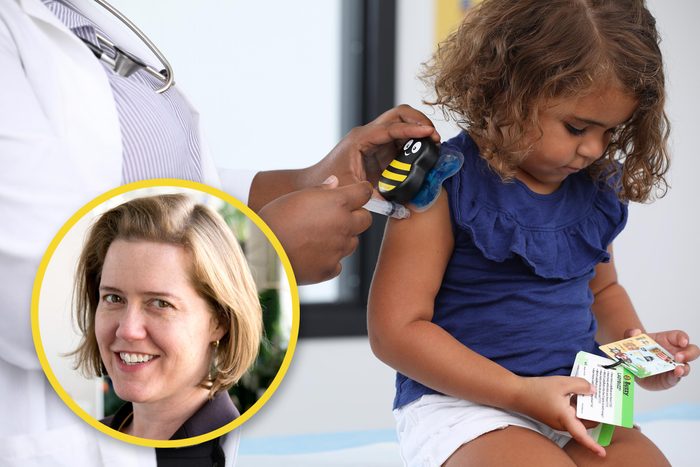
Buzzy
No mom likes to see her kids cry when they have to get a shot or have blood drawn, but Dr. Amy Baxter decided to do something about it. Though she was a pediatric emergency physician, she came up with the idea for Buzzy after her son had a bad needle experience. Researching ways to alleviate pain faster, she developed this wearable device that uses vibration, cold, and distraction to ease the sting of a needle and other sources of pain. If you have little ones, you won’t want to head to the doctor’s office without it, and actually, you might want to get one for yourself, too. Buzzy has also been used to help with IVF treatments, childbirth, administering IV medications, home-pain management, and more.
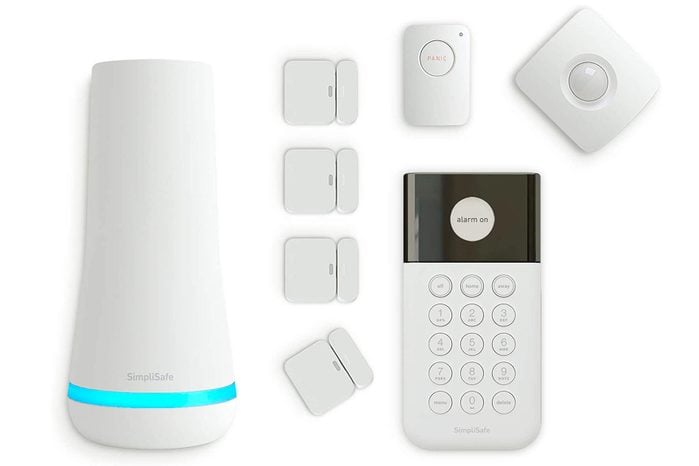
The first home security system
Marie Van Brittan Brown had a concern that all parents share: She was worried about her family’s safety. There had been an uptick in crime in her Queens, New York, neighborhood, and if a problem did arise, the police response time was slow. So, in 1966, Brown and her husband, Albert, filed for a patent for the first home security system. It was comprised of front-door peepholes at different height levels, a camera, monitors, and a two-way microphone, letting you see and hear the person standing outside and even allowing you to activate an alarm if necessary. It paved the way for today’s home security systems.
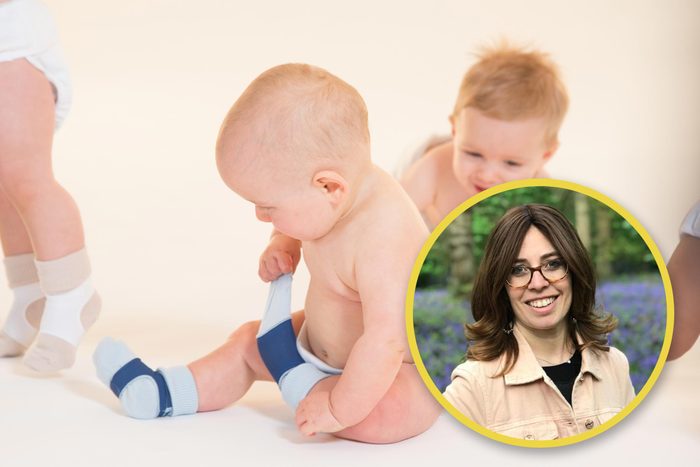
Sock Ons
Any parent who has ever dealt with lost baby socks will appreciate the genius of this product. When British mom Kezi Levin had to bring her young son to a formal wedding, she came up with a quick fix to keep his socks on: She cut up and glued together a pair of tights, which she then put over his socks. The preventive measure inspired Sock Ons, which are made of a softly woven elastic material and keep tiny socks firmly yet gently in place. This product hit the market in 2008 and has prevented untold amounts of baby socks from being lost ever since.
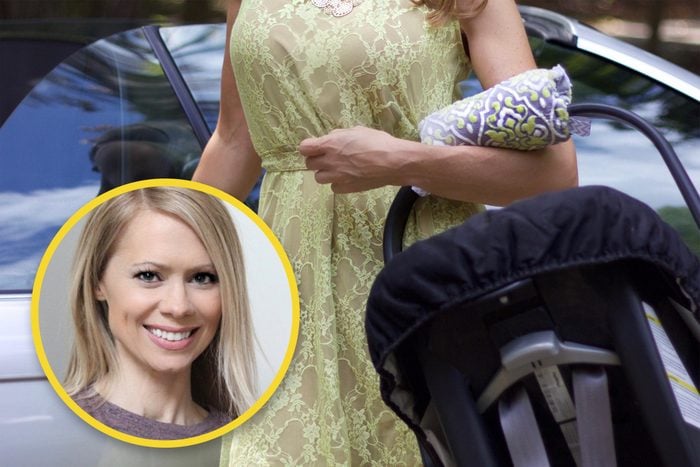
Padalily car seat handle cushion
Lugging around a heavy car seat can be a pain—literally—as the handle digs into your arms. In early 2007, while out running errands, Lily Winnail had sore arms and an epiphany. Why not make it more comfortable? So she created a Velcro wrap fabric cushion called the Padalily to solve this problem. Not only does it protect the crook of your arm, but it’s stylish, too.
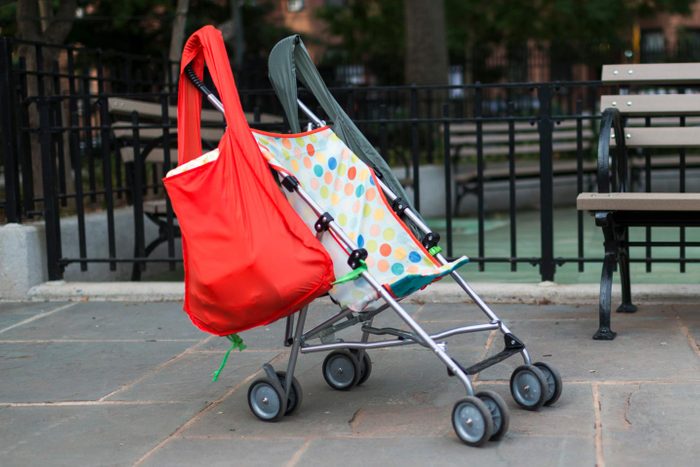
SureShop Bag for strollers
As a mom of three living in Brooklyn, Sonjie Feliciano Solomon knew firsthand just how hard it was to carry a full grocery bag while also attempting to maneuver a stroller. And if you attempt to hook the bag to the stroller, you risk toppling it when your child gets out. Feliciano Solomon, an artist and industrial designer, knew there had to be a solution—and she found one. Meet the SureShop Bag, a reusable bag with clips on the top and bottom that can slide onto a stroller’s handles. Holding up to 10 pounds, the bag’s design redistributes weight toward the stroller’s center of gravity to keep it standing upright. It can fold up and be stored in its pouch when not in use. Feliciano Solomon’s company, Hatch Things, also creates other products that provide simple everyday solutions for parents.
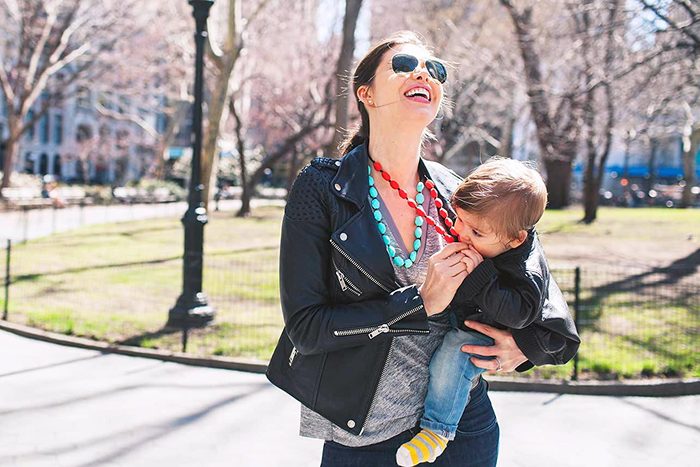
Chewbeads
Like all new moms, Lisa Greenwald realized just how much babies love to put things in their mouths. Her teething son would always go straight for the necklaces she was wearing. Concerned that the small pieces would hurt him, she came up with the idea for a collection of safe, colorful, and extremely wearable necklaces perfect for both mom and baby. Made with large silicone beads, the necklaces are additionally designed with breakaway clasps for safety. Originally established in 2009, the line now also includes bracelets, teethers, and other accessories. Discover the most famous invention from every state.
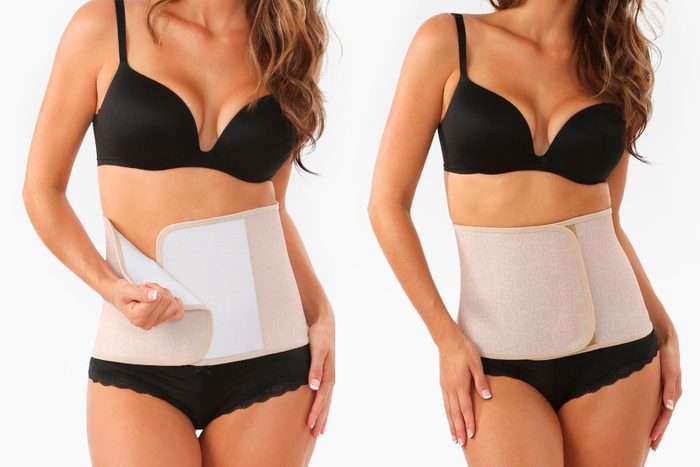
Belly Bandit
All new moms know that they should give themselves a break when it comes to their postpartum figures, but knowing that and doing that are two entirely different things. Lori Caden was trying to get her self-confidence back after giving birth when she had an upsetting moment while shopping at Target: Someone mistakenly thought that she was still pregnant. Devastated, she and her sisters, Jodi and Kari, decided to find a way to make things better—and that’s when the Belly Bandit Original Belly Wrap was born. This stretchy postpartum product is designed not only to smooth and compress bulges but also to provide support to the belly, waist, and hips, and ease postpartum back pain. Now, 12 years after its creation, the company also produces leggings, assorted undergarments and shapewear, pregnancy pillows, and a line of leakproof underwear.
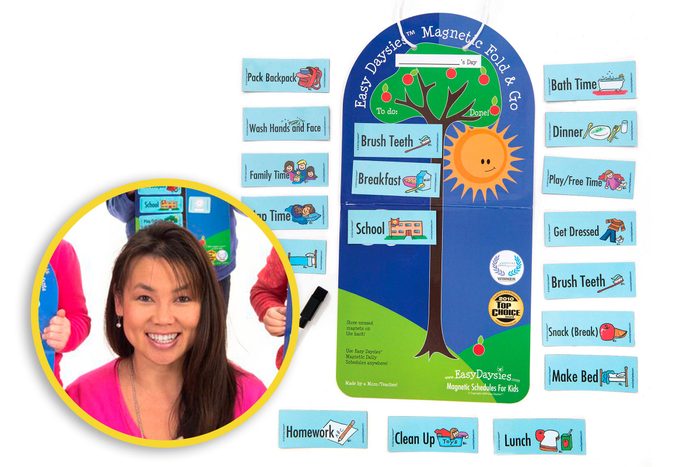
Easy Daysies
As every mom knows, young kids have trouble sticking to a routine. That’s what inspired Elaine Tan Comeau, a Canadian mother of three and schoolteacher, to create Easy Daysies, a visual and kid-friendly magnetic schedule that outlines what they need to do in a way that helps them actually do it. Comeau presented her idea for this chart to investors on the sixth season of the CBC television show Dragons’ Den, the Canadian version of Shark Tank. By the way, these are the 50 most successful Shark Tank products from the last decade.
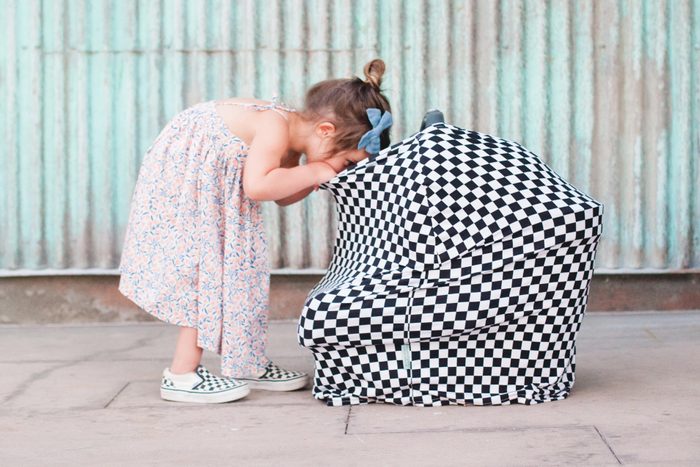
Covered Goods breastfeeding cover
Breastfeeding in public can be tricky for a variety of reasons, and if you choose to cover up while doing it, it can be even trickier. But, following the birth of her third daughter in 2012, Jamie Yetter was determined to make it work for her. She sewed some leftover fabric into a poncho with no armholes that completely covered her but still let her baby nurse underneath, and the Covered Goods nursing cover was born. The cover can also go over a car seat or shopping cart handle when the baby is sleeping, or be worn as a scarf. Next, discover the 19 inventions that have changed the world in the last decade.
